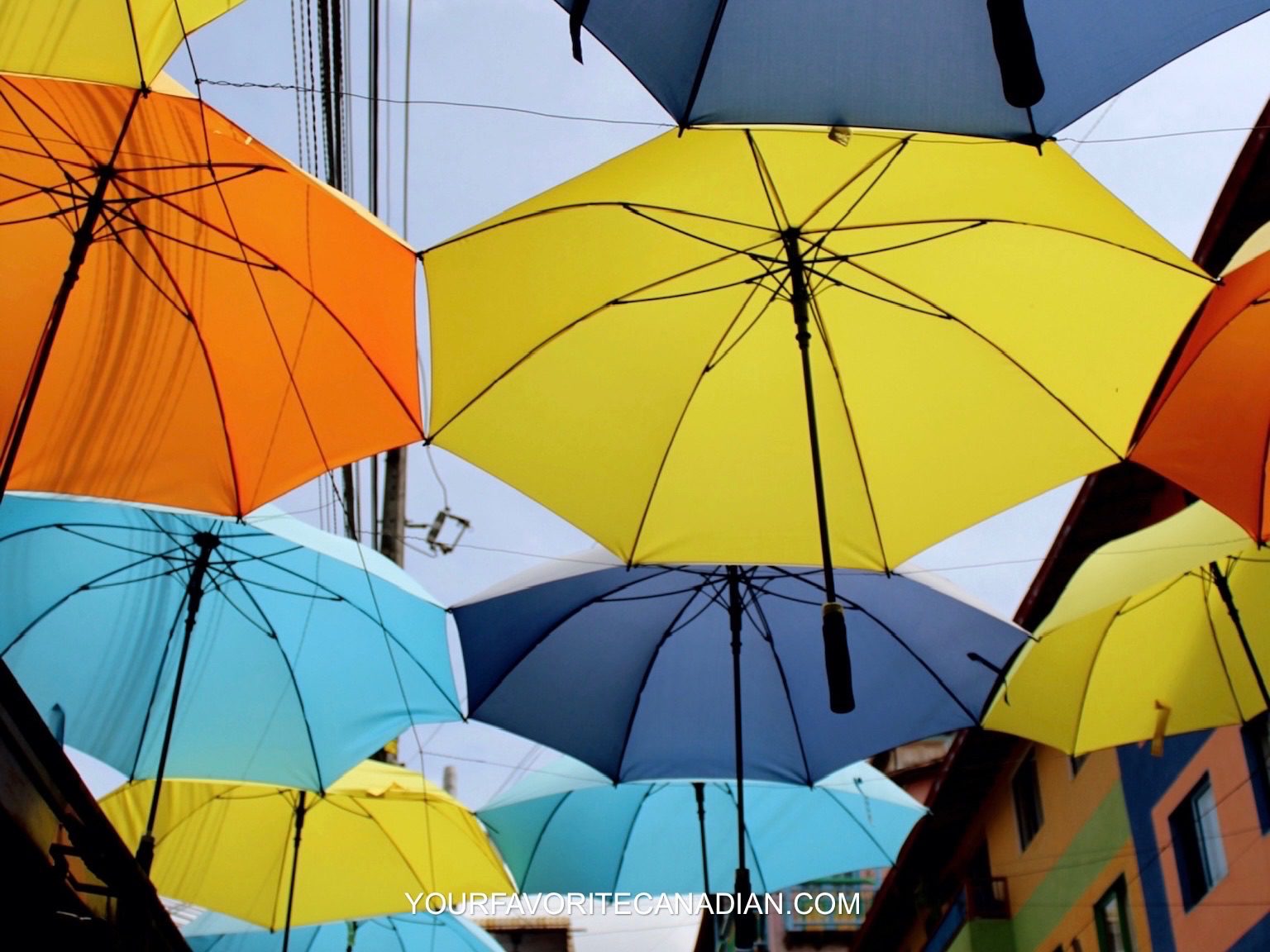Welcome to Colombia, a country bursting with color, culture, and adventure! Whether you’re craving a hike in Salento, a relaxing day on Caribbean beaches, or an exploration of rich history and cuisine, this travel guide has got you covered.
Get ready to discover all the essential information you need to make your Colombian adventure unforgettable!
Table of Contents
- Best Time to Visit: Climate, Crowds & Prices
- Local Culture & Etiquette: Cultural Norms, Language, Etiquette – Visiting Religious Sites
- Money Currency & Payments
- Accommodation Options: Types of Accommodations, Recommendations, Essential Apps
- Local Cuisine
- Transportation
- Safety & Health: Tap Water Conditions, Health Precautions, Emergency Informations, Safety Tips
- Visa Requirements
- Staying Connected: Getting a SIM Card in Colombia
- Top Attractions & Activities
1
Best Time to Visit
Colombia’s climate is as diverse as its geography, ranging from tropical rainforests and beaches to cooler highland cities. However, the country doesn’t experience distinct seasons like summer and winter. Instead, its weather is divided into two primary periods: the dry season (verano) and the rainy season (invierno).
Dry Season (December to March, July to August)
The dry season is considered the best time to visit Colombia, especially for outdoor adventures and exploring natural wonders. Expect sunny skies and pleasant weather across the country, making it ideal for:
- Beaches: Visit Caribbean coastal gems like Cartagena, Tayrona National Park, and the Rosario Islands for pristine sands and calm waters.
- Mountains and Hiking: Trek the Cocora Valley without worrying about slippery trails.
Rainy Season (April to June, September to November)
The rainy season brings frequent showers, particularly in the Amazon and Pacific regions. However, the rain often comes in short bursts rather than all-day downpours, and many areas remain lush and beautiful. It’s the perfect time to see Colombia’s landscapes at their greenest, with fewer tourists. Also, Bogotá and Medellín experience mild rain, but their attractions remain accessible year-round.
Crowds and Prices in Colombia
Peak Season (December to February, Easter, and mid-June to mid-July)
Colombia’s peak tourist season aligns with its dry months and major holidays. During these times:
- Crowds: Popular destinations like Cartagena, Medellín, and Tayrona National Park are full of both international and local travelers.
- Prices: Flights, accommodations, and tours are at their peak prices, yet they remain affordable compared to other countries in the Americas, such as Mexico and Costa Rica. Booking in advance is essential to secure your spot and avoid inflated costs.
Shoulder Season (March to April, September to November)
The shoulder seasons offer a sweet spot for travelers seeking moderate weather, fewer crowds, and more affordable prices.
- Benefits: Enjoy a relaxed atmosphere in tourist hotspots and take advantage of discounted rates for accommodations and tours.
- Highlights: This is an excellent time to explore cultural cities like Bogotá and Medellín or enjoy the Coffee Region without the crowds.
Low Season (May to June, October to November)
The low season coincides with the rainiest months, particularly in coastal and jungle areas.
- Fewer Tourists: If you don’t mind occasional rain, you’ll find quieter attractions and lower prices.
- Activities: Whale watching on the Pacific coast and cultural festivals in less touristy areas make this season worth considering.
When to Visit for Specific Experiences
- Flower Festival (August): Medellín comes alive with vibrant parades and floral displays during the Feria de las Flores.
- Coffee Harvest (April to May, October to November): Experience Colombia’s Coffee Region during its harvest season for a unique experience.
2
Local Culture & Etiquette
Colombia is a vibrant country where diverse traditions, indigenous roots, and Spanish influences create a culture that is dynamic and welcoming. Whether you’re exploring bustling cities, serene mountain villages, or tropical coasts, understanding a bit about Colombia’s cultural norms, language, and etiquette will help you make the most of your visit while connecting with the warm-hearted locals.
Cultural Norms
Colombians are known for their friendliness, hospitality, and strong emphasis on family and community. Family gatherings are central to Colombian life, and celebrations often include extended family members. Colombians are open and warm, so a polite and respectful attitude will always be appreciated.
Greetings:
- A handshake is standard when meeting someone for the first time.
- Using formal titles like Señor (Mr.), Señora (Mrs.), or Señorita (Miss) when addressing someone initially is a sign of respect. Once you’re familiar, switching to first names is welcomed.
Punctuality: Colombians often take a relaxed approach to time, particularly for social gatherings. While it’s polite to arrive on time for professional appointments, a slight delay is usually acceptable for casual events.
Language
The official language of Colombia is Spanish, and although English is slightly understood in major cities and tourist areas, speaking a few basic Spanish phrases will greatly enhance your experience. Colombians appreciate visitors who make an effort to engage in their language, even if it’s just the basics.
Here are a few useful phrases:
- Hola (Hello)
- Gracias (Thank you)
- Por favor (Please)
- ¿Cuánto cuesta? (How much does it cost?)
- No hablo español muy bien (I don’t speak Spanish very well)
These small efforts can go a long way in building connections and showing respect for Colombian culture.
Etiquette – Visiting Religious and Cultural Sites
Colombia is predominantly Catholic, and religious and cultural sites play an important role in its heritage. Whether you’re visiting a grand cathedral in Bogotá, a rural chapel, or an indigenous sacred site, respectful behavior is essential.
Tips for Visiting Religious and Cultural Sites:
- Dress modestly: Avoid revealing clothing. For men and women, covering shoulders and knees is generally appropriate.
- Be mindful of noise: Keep conversations quiet and avoid making unnecessary noise while inside places of worship.
- Photography: Always check for signs or ask permission before taking photos, particularly during services or in areas considered sacred.
- Avoid disruptions: Refrain from eating, drinking, or using your phone. Removing hats before entering a religious site is a traditional sign of respect.
- Donations: If there’s a donation box, consider leaving a small contribution to help maintain the site.
3
Money Currency & Payments
Planning your finances is key to enjoying a smooth trip to Colombia. Here’s everything you need to know about handling money in the country.
Colombian Peso (COP): The Local Currency
The official currency in Colombia is the Colombian Peso, abbreviated as COP and symbolized by “$”. Banknotes are available in denominations of 2,000, 5,000, 10,000, 20,000, 50,000, and 100,000 pesos, while coins come in 50, 100, 200, 500, and 1,000 pesos.
Exchange Rates
Exchange rates fluctuate daily based on global market conditions. As of late 2024, the approximate rates are:
- 1 USD = 4,000-4,200 COP
- 1 CAD = 3,000-3,200 COP
It’s a good idea to check the current rates before your trip to estimate your budget.
Currency Exchange Tips
Currency exchange services are widely available in Colombia, including at airports, banks, and exchange bureaus (casas de cambio). However, you’ll usually get a better rate by withdrawing money from an ATM or exchanging currency at your local bank before traveling.
Best Practices for Currency Exchange:
- Avoid airport kiosks, as they typically have lower rates and higher fees.
- Use official ATMs or exchange counters in safe areas like banks or malls.
- If withdrawing cash from an ATM, decline the ATM’s currency conversion option. Your home bank will likely provide a better rate.
ATM Withdrawal Limits and Fees
ATMs are widely available in cities and tourist areas. Here’s what you need to know:
- Withdrawal Limits: Most Colombian ATMs allow withdrawals of up to 600,000 to 2,000,000 COP per transaction, depending on the bank. Be aware of daily limits set by your home bank.
- Fees:
- Colombian ATMs often charge a fee of 10,000 to 20,000 COP per transaction.
- Your home bank may also charge international withdrawal fees.
To save on fees, withdraw larger amounts of cash at once rather than making frequent small withdrawals.
Using Credit and Debit Cards
Credit and debit cards are widely accepted in Colombia, especially in cities and tourist areas. Visa and Mastercard are the most commonly accepted, while American Express may not be accepted everywhere, particularly in rural areas or small businesses.
Things to Keep in Mind:
- Many businesses have a minimum purchase requirement for card payments, so always carry some cash.
- Contactless payment options like Apple Pay and Google Pay are available in major cities but not yet widespread.
- Check with your bank for foreign transaction fees to avoid unexpected charges on your card.
Tipping Etiquette
Tipping is appreciated in Colombia but not always mandatory. Here’s a quick guide:
- Restaurants: A service charge of 10% is often included in the bill, but if it isn’t, leaving 10% to 15% is customary.
- Bars: Tipping is optional, but 1,000 to 2,000 COP per drink is appreciated.
- Hotels: Tip 5,000 to 10,000 COP per bag for bellhops and 5,000 to 10,000 COP per day for housekeeping.
- Taxis: Tipping is not expected for standard rides. However, rounding up the fare is common and appreciated.
- Tour Guides: For group tours, tip 10,000 to 20,000 COP per person. For private tours, tipping 10% to 20% of the tour cost is customary.
US Dollars: Should You Use Them?
While US dollars are accepted in some tourist areas, it’s not common practice in Colombia. Paying in dollars often results in unfavorable exchange rates. It’s better to have Colombian pesos for transactions. Note that ATMs in Colombia dispense only pesos, so if you plan to bring US dollars, exchange them before traveling.
4
Accommodation Options
Choosing your accommodation can significantly impact your travel experience. To help you make the best decision, here’s a breakdown of the three main types of accommodations, with recommendations from my past trip and essential apps that will make booking these stays easier for you!
Types of Accommodations
- Villas: Renting a villa is by far the most visually stunning option, offering unique and original stays that can be truly memorable. Villas are usually equipped like apartments, complete with a kitchen and fridge, allowing you to prepare your own meals. While villas tend to be pricier, you can save money by cooking rather than dining out every day. This option is especially ideal for families or large groups, as splitting the cost can make it more affordable and enjoyable than staying in separate hotel rooms.
- Hotels: Hotels are a classic choice with a wide range of options to suit different budgets. Staying in a hotel offers you the comfort of daily housekeeping, room service, and access to various amenities that you won’t find in a villa, such as spas, yoga classes, and more. If you value security and convenience, hotels are a great option, especially for those who prefer having staff available around the clock to assist with any needs.
- Hostels: For backpackers and budget travelers, hostels are the most economical choice. While they may lack the luxury and comfort of villas or hotels, hostels offer a unique and social experience, perfect for young travelers. You’ll typically have a bed in a shared dormitory, making it an excellent way to meet new people, especially if you’re traveling solo. Many hostels also organize group activities to help guests connect. If you’re young and willing to trade a bit of comfort for a memorable and social experience, hostels are the way to go.
Here are two of my favorite places where I stayed during my trip to Colombia:
Medellín: With 5 stars on Airbnb, this is the nicest Airbnb I’ve ever stayed at. Its location was in a great neighborhood, and the size of the apartment was incredible, even featuring a hammock in the living room. With 3 bedrooms and 2 full bathrooms, it’s a no-brainer that this Airbnb should be your top choice if you’re visiting Medellín with a group of 3 to 8 people. Click here to see the Airbnb!
Salento: With a 4.89-star rating on Airbnb, this small apartment was a highlight of our stay in the village. Its central location made it easy to access all the activities we had planned. Carmen, the host, was incredibly kind, answering all our questions and being very accommodating with our luggage. If you’re traveling as a group of 3 to 6 people, I highly recommend booking this option! Click here to see the Airbnb!
Essential Apps
- Booking.com: This app offers a wide range of accommodations, including hotels, hostels, and villas, all in one place.
- Airbnb: Perfect for finding unique and original villas or apartments that offer a home-like experience.
- Hostelworld: Specializing in hostels, this app features an excellent rating system to help you choose the best option. It also includes group chats where you can connect with others who will be staying at the same hostel.
Extra Recommendation: Once you’ve found a place you like, especially with hotels and hostels, be sure to visit their official website. Often, you can find exclusive discounts when booking directly through them.
5
Local Cuisine
Colombian cuisine is a celebration of the country’s rich cultural heritage and diverse landscapes, offering a mix of hearty traditional dishes, fresh ingredients, and regional specialties. Here’s everything you need to know to make the most of your food adventure in Colombia:
Must-Try Dishes in Colombia
- Arepas: A staple of Colombian cuisine, arepas are made from cornmeal and come in various styles. Some are plain, while others are stuffed with cheese, eggs, or meats.
- Bandeja Paisa: This plate is Colombia’s national dish. It features beans, rice, chorizo, ground beef, fried plantain, avocado, and a fried egg, often with a side of arepa.
- Ajiaco: A comforting chicken and potato soup from Bogotá, flavored with guasca (a local herb), and often served with capers, cream, and avocado on the side.
- Sancocho: A traditional stew made with meat (chicken, beef, or fish), plantains, potatoes, and yucca, often served with rice and avocado.
- Empanadas: Crispy pockets of dough filled with meat, potatoes, or cheese.
Dining Culture in Colombia
In Colombia, meals are more than just food—they’re moments to connect with family and friends. The main meal of the day is lunch, often served between 12 pm and 2 pm. It’s typically a multi-course affair, starting with soup or salad, followed by a main dish and a sweet dessert or fresh juice. Dinner is usually lighter, often consisting of arepas, soups, or small snacks.
Street Food Favorites
- Arepa de Huevo: A fried arepa filled with a whole egg, commonly found on the Caribbean coast.
- Pandebono: A cheesy bread made with cassava flour, perfect for a quick snack.
- Patacones: Crispy fried green plantains, often served with toppings like cheese or guacamole.
Drinks & Desserts
- Aguardiente: Colombia’s traditional anise-flavored spirit, perfect for toasting with locals.
- Cholado: A refreshing dessert made with shaved ice, fruit, condensed milk, and sweet syrups.
- Canelazo: A warm drink made with aguardiente, cinnamon, and panela (unrefined cane sugar), popular in cooler Andean regions.
- Postre de Natas: A creamy dessert made with milk, sugar, and cinnamon, originating from Bogotá.
- Cremas Alba: My favorite dessert in Colombia! It’s a popsicle made with fresh fruit, lime juice, and a touch of salt. You absolutely need to try the passion fruit and mango flavors—they’re amazing!
Stay connected! Follow us on social media for exclusive content & updates on our travels.


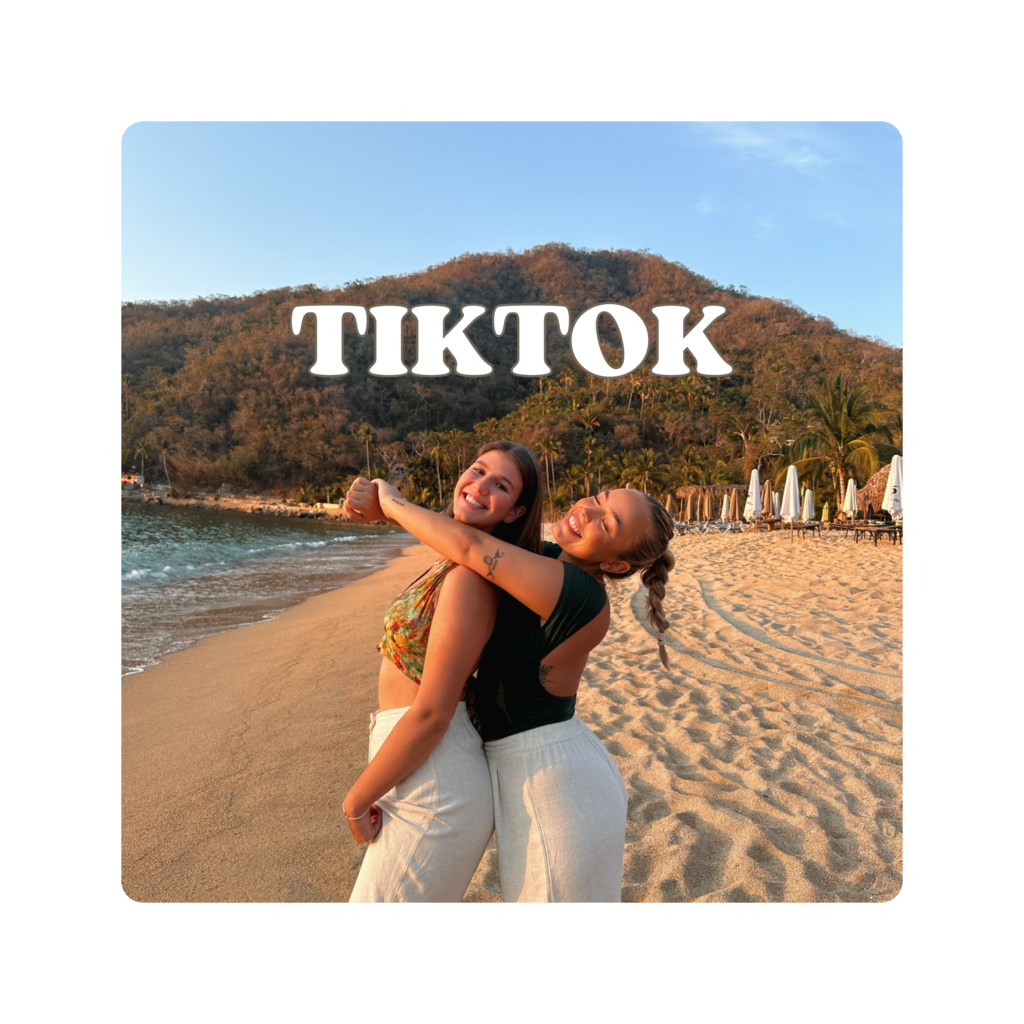
On our website, you’ll find all the essential information and tips, while on our social media, you’ll get even more – including personal experiences, funny moments, stunning videos, and much more!
6
Transportation
Getting around Colombia is an adventure in itself, offering a variety of transportation options to fit different budgets and travel preferences. With its diverse geography, dominated by mountains, traveling between cities often requires planning and research. To help you make the most of your journey, here’s an overview of the main ways to get around within cities and between destinations in Colombia:
Within Cities
- Public Buses
Colombia’s public buses are an affordable and convenient way to travel within cities and towns, with options varying based on the location.
- In Larger Cities: Cities like Bogotá and Medellín have more organized public transportation systems. Bogotá features the TransMilenio, a rapid bus transit system with designated lanes, making it an efficient choice for navigating the city. You’ll need a Tullave card to board, which can be purchased and recharged at stations or kiosks. Similarly, Medellín’s Metroplús integrates with the city’s metro system. A Cívica card is required for payment and can be obtained at metro stations.
- In Smaller Towns: Public buses in smaller towns often consist of colorful, smaller vehicles or colectivos (shared minivans). These don’t usually follow strict schedules and may stop anywhere along their route to pick up or drop off passengers. Fares are typically paid in cash directly to the driver.
- Taxis and Ride-Sharing Services
Taxis are widely available in most Colombian cities. While convenient, it’s essential to use official taxis, which you can often book through apps like Tappsi or EasyTaxi for added safety. Always confirm the fare or ensure the meter is running.
Ride-sharing services like Uber, Cabify, and Didi operate in major cities like Bogotá, Medellín, and Cali, offering a safer and often more affordable alternative to traditional taxis.
- Metro and Cable Cars
Medellín’s metro system is clean, efficient, and affordable, making it a great option for getting around. The city also features cable cars that connect hillside neighborhoods to the metro, offering stunning views and a unique travel experience.
- Motorbikes and Tuk-Tuks
In smaller towns and rural areas, motorbike taxis and tuk-tuks are popular for short distances. They’re an affordable and fun way to explore off-the-beaten-path locations, but be sure to agree on a fare before starting your trip.
Between Destinations
- Intercity Buses
For longer distances between cities, intercity buses are a reliable and popular choice. Companies like Expreso Brasilia, Bolivariano, and Copetran provide a range of options, from basic to premium services with reclining seats, air conditioning, and even on-board Wi-Fi. Overnight buses are a great way to save on accommodation while covering large distances, but it’s advisable to choose reputable companies for safety and comfort. Booking in advance is recommended during holidays or weekends.
- Domestic Flights
Colombia’s size and diverse geography make domestic flights an excellent option for long-distance travel. Airlines like Avianca, LATAM, and Viva Air connect major cities and popular destinations like Bogota, Medellin, Cartagena, San Andrés, and Leticia in the Amazon. Flights are frequent and often reasonably priced, especially if booked in advance.
- Car Rentals
Renting a car is ideal if you want to explore Colombia’s remote areas, such as the coffee region or coastal highways. Major rental companies are available in airports and city centers. However, driving in Colombia can be challenging due to winding mountain roads and varying road conditions. Make sure to check local driving requirements and consider insurance coverage for peace of mind.
7
Safety & Health
Staying informed about safety and health practices is essential for ensuring a smooth and enjoyable visit to Colombia. Below, you’ll find important details about tap water conditions, health precautions, and emergency information.
Water Safety in Colombia
Tap water safety in Colombia varies by region. In major cities like Bogotá and Medellín, tap water is generally safe to drink. However, in smaller towns or rural areas, it’s better to stick to bottled or filtered water. Here are a few tips to stay safe:
- Drink bottled or filtered water: Always check that bottled water has an intact seal before purchasing.
- Be cautious with ice: In major cities, ice is usually made with purified water, but it’s still a good idea to confirm when in doubt.
- Brush teeth with filtered water in rural areas: While city water may be safe, using bottled or filtered water in less-developed areas provides extra peace of mind.
If you’re unsure or have a sensitive stomach, sticking to bottled water is always a safe choice. It’s widely available and very affordable throughout the country.
Health Precautions
Colombia is a tropical country, so taking simple precautions can help you avoid common health issues:
- Vaccinations: Ensure your routine vaccinations are up to date. Hepatitis A, typhoid, and yellow fever vaccines are often recommended, especially if visiting jungle areas.
- Mosquito Protection: Regions like the Amazon and coastal areas have mosquitoes that may carry diseases such as dengue or malaria. Use insect repellent, wear long-sleeved clothing in the evenings, and sleep under a mosquito net if necessary.
- Sun Protection: Colombia’s proximity to the equator means the sun can be intense. Use sunscreen, wear a hat, and stay hydrated to avoid sunburn and heat exhaustion.
- Stomach Safety: To minimize the risk of traveler’s diarrhea, stick to cooked foods and choose reputable vendors if trying street food. Probiotic supplements or anti-diarrheal medications can be helpful to pack.
Emergency Information
It’s always wise to be prepared for emergencies while traveling. Here’s what you need to know for Colombia:
Emergency Numbers
- General Emergency Services (Police, Fire, Ambulance): 123
- Tourist Assistance: Many tourist destinations have police units dedicated to assisting travelers. Ask for “Policía de Turismo” if needed.
Hospitals and Clinics
Colombia has a well-regarded healthcare system, especially in major cities such as Bogotá, Medellín, and Cartagena. High-quality hospitals like Clinica del Country (Bogotá) and Hospital Pablo Tobón Uribe (Medellín) are known for excellent care. Always note the location of the nearest hospital or clinic to your accommodation.
Language and Communication
While many medical professionals in larger cities and tourist areas speak English, it’s helpful to know basic Spanish phrases or have medical information translated into Spanish. This can ease communication in case of an emergency.
Pharmacies
Pharmacies (farmacias) are widely available in Colombia, offering over-the-counter medications. Bring prescription medications in their original packaging along with a copy of your prescription to avoid issues.
Safety Tips
Every traveler needs to be cautious, especially if you are solo traveling. We wrote an entire article giving you our best safety tips. Make sure to come back at the end of your reading to find out Top Safety Tips for Solo Travelers: Stay Safe & Confident.
8
Visa Requirements
Here’s what you need to know about the entry requirements to ensure a smooth and hassle-free experience. Whether you’re visiting for a short getaway or a longer stay, understanding Colombia’s rules will help you prepare for your trip.
Visa-Free Entry for Short Stays
Citizens from many countries, including Canada, the United States, the United Kingdom, Australia, and most European Union nations, do not need a visa to visit Colombia for tourism purposes. You can stay in Colombia visa-free for up to 90 days, with the possibility of extending your stay for an additional 90 days by applying at Migración Colombia.
You’ll need a valid passport with at least six months of validity from your date of entry to be eligible for visa-free travel.
Entrance Fee for Canadian Citizens
If you’re a Canadian citizen, note that Colombia charges an entrance fee when you arrive in the country. This fee is typically around 85$ CAD ($260,000 COP) and is payable at the airport upon entry. Make sure to have local currency or a credit card ready to settle this fee.
Visa Requirements for Extended Stays
If you plan to stay in Colombia for more than 180 days in a calendar year, or for purposes other than tourism (such as work, study, or volunteering), you’ll need to apply for the appropriate visa through a Colombian consulate or Migración Colombia. Common visa options include:
- Student Visas
- Temporary Work Visas
- Digital Nomad Visas (recently introduced for remote workers)
Tips for a Smooth Entry
- Check Passport Validity: Make sure your passport is valid for at least six months beyond your arrival date.
- Carry Necessary Documents: Bring a copy of your flight itinerary, proof of accommodation, and sufficient funds to show at immigration if requested.
- Respect Entry Limits: Don’t overstay the 90-day limit without applying for an extension, as this can result in fines.
By understanding Colombia’s entry requirements and planning accordingly, you can focus on enjoying the country’s stunning landscapes, rich culture, and warm hospitality without any unnecessary surprises at immigration.
9
Staying Connected
Staying connected in Colombia is essential for navigating its vibrant cities, communicating with locals, and sharing your adventures with loved ones back home. Here’s a guide to help you easily get a local SIM card and stay connected during your trip.
Where to Buy a SIM Card
SIM cards in Colombia are easy to find and can be purchased at major airports, convenience stores like Oxxo, and mobile network provider shops. For the best deals and reliable service, head to official stores of well-known providers such as Claro, Movistar, and Tigo. While airport kiosks are convenient, they often charge higher prices, so purchasing a SIM card in town can save you money.
Setting Up Your SIM Card
Once you’ve purchased a SIM card, store staff will usually help with the setup. This includes inserting the SIM card into your phone, activating it, and adding your preferred data or call plan. Prepaid SIM cards come with a variety of packages offering data, local calls, and texts for set durations (daily, weekly, or monthly). Make sure your phone is unlocked to use a Colombian SIM card.
Choosing a Provider and Plan
- Claro: The largest and most reliable provider in Colombia, offering extensive coverage in both urban and rural areas. It’s a popular choice for travelers seeking dependable service.
- Movistar: Offers affordable plans and good coverage, though reception may vary in more remote regions.
- Tigo: Known for competitive pricing and strong urban coverage, making it a great option for city travelers.
Most plans include unlimited local calls and texts, with varying data options. You can top up your SIM card at convenience stores, supermarkets, or online.
I chose a Claro SIM card that cost me $5 USD ($7 CAD) and included 20GB of data valid for 21 days. I purchased it at an Oxxo convenience store, making it a quick and hassle-free option.
Internet and Connectivity
Colombia has strong mobile network coverage in cities and tourist areas, such as Bogotá, Medellín, Cartagena, and Cali. However, in remote or rural areas, coverage may be spotty or slower. Data speeds in populated areas are generally reliable, allowing for smooth browsing, navigation, and video calls.
Wi-Fi Availability
While having a local SIM card is great for staying connected on the go, Wi-Fi is widely available in hotels, cafes, and restaurants, especially in urban and tourist-friendly areas. Keep in mind that public Wi-Fi networks may not always be secure, so using a VPN is recommended if accessing sensitive information.
Getting a local SIM card in Colombia is an easy and affordable way to stay connected throughout your trip!
10
Top Attractions & Activities
Whether you’re seeking vibrant nature, thrilling adventure, or tranquil relaxation, Colombia has something for every type of traveler. With its rich cultural heritage, diverse ecosystems, and the famously warm hospitality of its people, Colombia stands out as a destination that should be on every traveler’s bucket list.
Here are three must-see attractions that showcase the country’s variety:
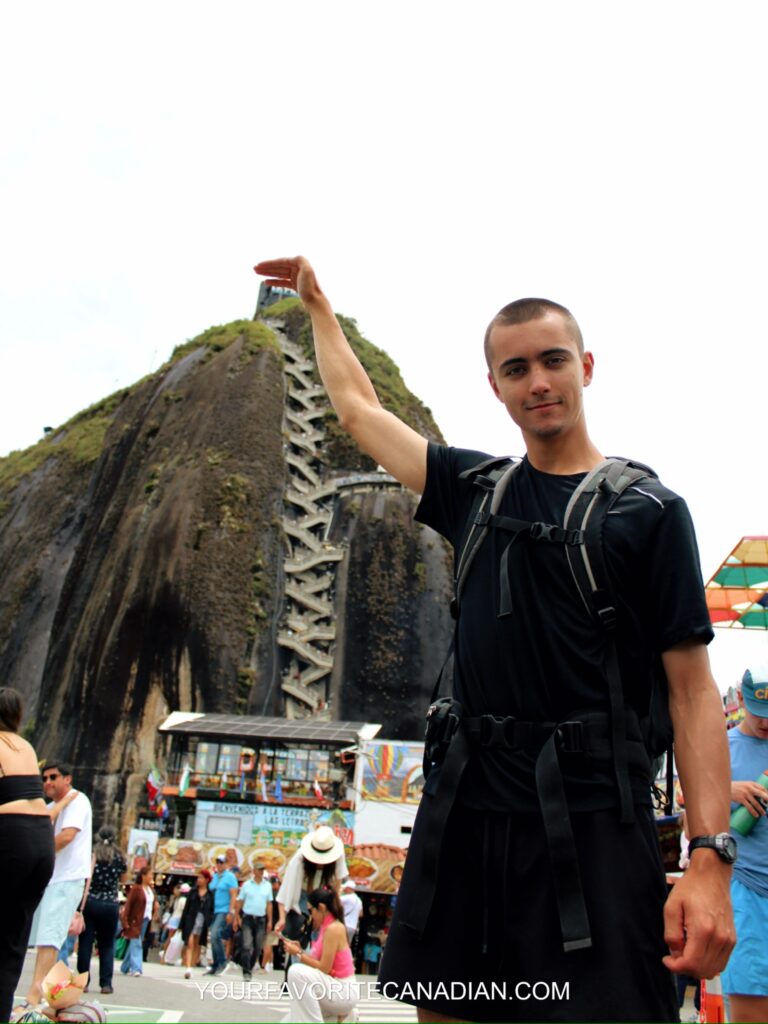
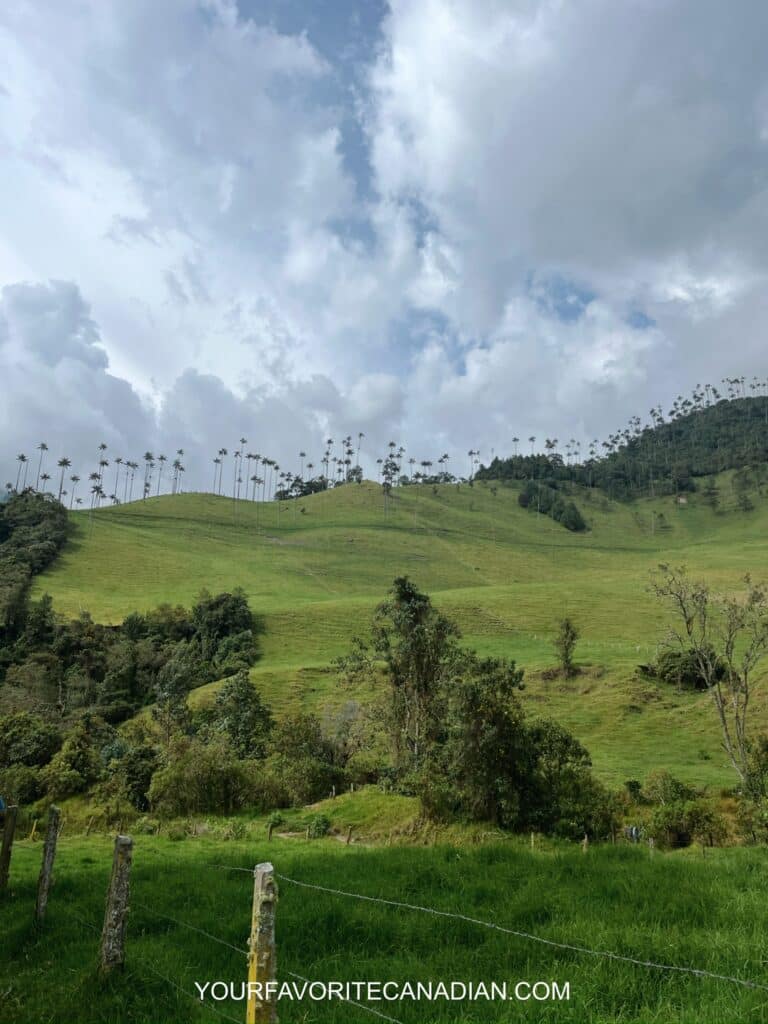
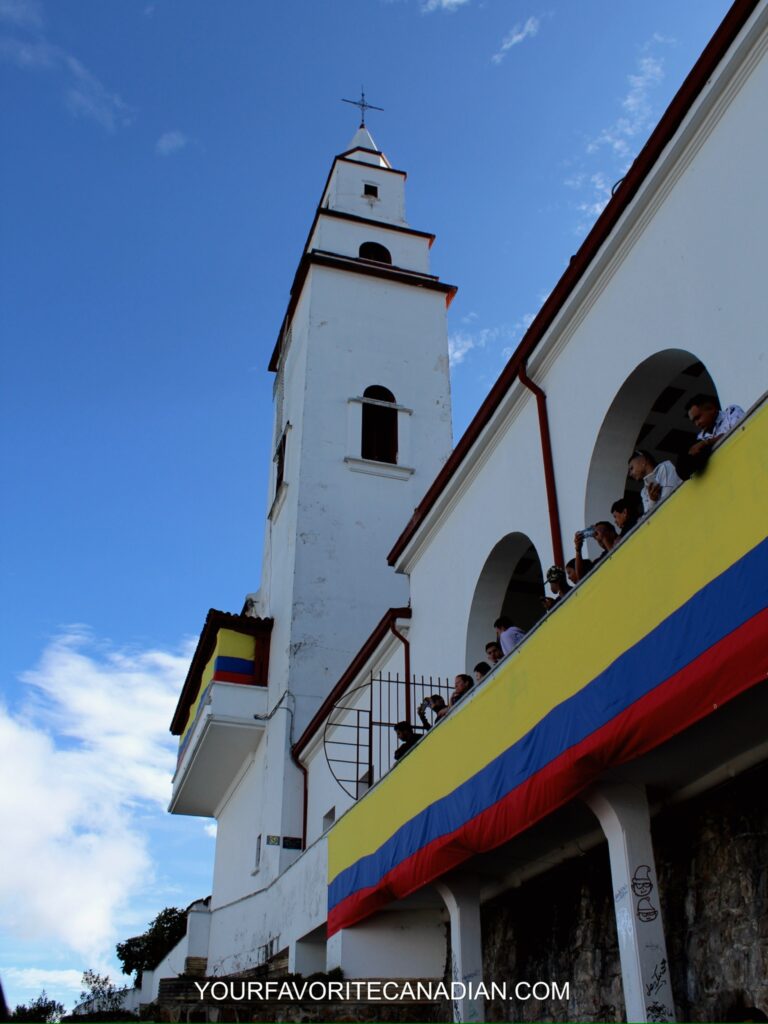
Don’t want to miss out on our latest articles? Be sure to subscribe to our website, and you’ll receive a notification every time we publish something new!
